Opinion & Analysis
What Tiger Woods Has In Common With Bill Russell (Hint: It’s Isolation)

Shaking hands with Steve Scott standing on the green of the 38th hole of the final match in the 1996 U.S. Amateur, Tiger Woods ascended into greatness with his third-straight U.S. Amateur victory. In a feature for the September 2nd issue of Sports Illustrated that year, Jaime Diaz captured a quote from Tiger referencing his second-round 66 in the 1996 Open Championship. Looking back now, there’s a freedom one can only hope Tiger will find again. “Something really clicked that day, like I had found a whole new style of play,” Woods said. “I finally understood the meaning of playing within myself. Ever since, the game has seemed a lot easier.”
That’s quite a bold statement for someone who, beginning five years earlier, held the top national amateur title in the country from the time he was 15 until he turned pro at the age of 20. Three consecutive USGA Junior titles followed by three consecutive USGA Amateurs. He was in the conversation among Bobby Jones and Jack Nicklaus as the greatest amateur player to ever live. It seems golf only got easier for the young superstar. We all know his record between 1996 and 2013. No need to lay it out. But something happened along the way.
On Memorial Day of this year, news broke that Tiger had been arrested on suspicion of Driving Under the Influence. A mugshot appeared not a half hour after his release from police custody in Jupiter, Florida. What followed was a statement on his website claiming full responsibility for his actions.
“There was no alcohol involved,” Woods wrote. “I didn’t realize the mix of medications had affected me so strongly.”
It would be easy to speculate as to why Tiger was found on the side of the road. He did have back surgery recently (his fourth back surgery), on top of multiple other surgeries and procedures over the years; he’s practically the bionic man at this point. But speculation about his habits doesn’t provide any context into the Tiger we are seeing now. For context, we need understand who Tiger is as a figure. And for that, we need to go back a little further.
In 1957, the Boston Celtics made a deal with the St. Louis Hawks to acquire the second-round draft pick, and ultimately, the man who would change the dynamic of basketball forever.
William (Bill) Felton Russell was a 6-foot 10-inch towering figure, and in a league full of slow white guys, he dominated down low and simply outpaced everyone else on the court. For his career, Russell averaged over 15 points per game, over 22 rebounds per game, and 4.3 assists. Russell also won 11 championships with the Boston Celtics over the course of 13 seasons, two of which were as a Player/Coach (‘68 and ‘69). The numbers are astonishing and are the part of the story we still talk about today, but it’s not the most important part. Bill Russell was the first black superstar in the NBA.
In a story for Rhino Press, David Valerio writes this about Russell: “He was also 6-feet 10-inches, an athletic monster who blocked and dunked on players, actions previously unknown in the NBA. No one dunked. No one blocked. It was unheard of. Yet the arrival of Bill Russell signaled the start of a new era in league history; it signaled the arrival of black players into the NBA. Bill Russell was not the first black NBA player — such well-known names as Chuck Cooper, Harold Hunter, and Nat “Sweetwater” Clifton broke the race barrier first. But none of you know their names, because they weren’t superstars like Bill Russell was; they couldn’t lead teams to championships in addition to being named the league’s Most Valuable Player. Bill Russell was a star who helped change the face of the NBA forever, for Russell was not only the premier black NBA player, but he was also a black man who fought against racism in both its perceived and actual forms.”
Bill Russell wasn’t the first black athlete in his sport. But he was the first to ascend into superstardom. Sound familiar?
Tiger wasn’t the first black player to grace the PGA Tour; he was preceded by the likes of Calvin Peete (12 wins on the PGA Tour including the Harry Vardon and Byron Nelson Awards in 1984), Jim Thorpe (three wins on PGA Tour, 13 on the Champions Tour), Charlie Sifford (the first black player on the PGA Tour and won twice), and Lee Elder (the first black man to play in The Masters in 1975). What made Tiger different from his contemporaries is almost identical to what was different about Bill Russell. They finished paving a road others had started and seemed to do it on sheer willpower and work ethic.
Yes, for as long as we can remember, it was assumed that Tiger would be gunning for Nicklaus’ record, but it’s one thing for people to assume it’s going to happen and it actually happening. In Bill Simmons’ The Book of Basketball, he tells the story of how he perceived what made Larry Bird so great to Celtics fans. “In the big scheme of things,” Simmons writes, “Number 33 [Bird] was an extremely tall and well-coordinated guy who did his job exceptionally well. That’s it. You can’t call him a superhero because he wasn’t saving lives or making the world a better place. At the same time, he possessed heroic qualities because everyone in New England bought into his invincibility.
“He came through too many times for us. After a while, we started expecting him to come through, and when he still came through, that’s when we were hooked for good.”
What Simmons describes in his book about Larry Bird is the same thing we came to expect from Tiger essentially as soon as he slid on his first green jacket. Tiger was an invincible athlete who was also truly breaking the racial barrier in an elitist sport. Standing on the shoulders of Charlie Sifford, Calvin Peete, Jim Thorpe, and Lee Elder, Tiger climbed higher than any professional golfer ever had, much like Bill Russell. It didn’t matter the situation; Tiger always hit to shot that kept him in it, or he always sank the putt to extend a match or take the lead. What also came with that invincibility was isolation. Simmons goes on to write about Russell, “Maybe the city [Boston] would have accepted an African-American sports hero in the fifties and sixties — eventually it accepted many of them — but never someone as complex and stubborn as Russell.” Again, where Russell and Tiger are the same, people never really connected with Tiger as a persona, they were just in awe of his sheer dominance.
While Bill Russell was winning championships like older brothers win wrestling matches, he was also absorbing shots to his character and his abilities for no reason other than the color of his skin. David Valerio goes on to write in his piece, “While Russell was on tour with an exhibition team prior to the 1961-62 season, Russell and a teammate were denied service in a restaurant when their team was scheduled to play a game in Lexington, Kentucky. Russell and his team then refused to play in the city and flew back home, generating a large amount of controversy.” What followed that incident laid the groundwork for how Russell would be perceived the rest of his career, and to many, still is. Valerio continues, “In response to this, and other issues, Russell became resentful of the media and fans’ attentions, as he believed it all to be sarcastic and hollow. This resentment held over to his reactions with the local Boston fans. As a result of this, and many other events, Russell never particularly warmed to Boston, a city notorious for its racism, even as he continued on to win an exorbitant amount of championships for its team.”
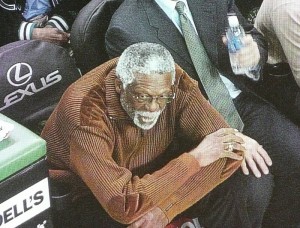 As late as 1997, Fuzzy Zoeller made his infamous quote on Tiger’s achievements thus far: “He’s doing quite well, pretty impressive. That little boy is driving well and he’s putting well. He’s doing everything it takes to win. So, you know what you guys do when he gets in here? You pat him on the back and say congratulations and enjoy it and tell him not to serve fried chicken next year. Got it. Or collard greens or whatever the hell they serve.”
As late as 1997, Fuzzy Zoeller made his infamous quote on Tiger’s achievements thus far: “He’s doing quite well, pretty impressive. That little boy is driving well and he’s putting well. He’s doing everything it takes to win. So, you know what you guys do when he gets in here? You pat him on the back and say congratulations and enjoy it and tell him not to serve fried chicken next year. Got it. Or collard greens or whatever the hell they serve.”
That was a mere 20 years ago.
As we look back at Bill Russell’s career, it makes total sense that he isolated himself from the media. Why would he give them the time of day? They weren’t out there playing his game. They weren’t sweating on the practice court alone before anyone else showed up; it was just him. And his will to beat the hell out of everyone else. That’s it. Simmons claims he was complex, and I’m sure there are aspects of him that are, but it seems he just wanted to be left alone to play his game and beat everybody else that tried to join him. Had Dan Jenkins been covering basketball in Russell’s prime, he might have felt the need to write a (fake) interview with him for Sports Illustrated, because something tells me he wouldn’t have sat down with Jenko either. For many reasons, Russell spent essentially the entire 90s living a reclusive life in the Pacific Northwest.
As we sit and ponder over the next few days, and throw around comments about whether Tiger will ever play golf again, we need to also think about what Jack Nicklaus had to say about a man whom he refers to as a friend.
“I feel bad for Tiger. Tiger’s a friend. He’s been great for the game of golf. He needs our help. I wish him well.”
It’s easy to forget that Tiger Woods is not just a brand and not just a legendary golfer. He’s a person, a father, and a man who dominated a tour that until 1961 no black man had ever been allowed to even join. Like Russell, even well into the height of his career, when he was at the top of the mountain, he had to endure comments rooted in racism, even if they may not have been ill-intentioned. Tiger just wanted to play his game better than anyone who’d ever lived. All the other stuff was simply a by-product, and eventually, the by-product got in the way, making it harder to play within himself.
In a 2010 piece from Bleacher Report titled The Psychology Behind Greatness: Tiger Woods Imbalance, Vincent Heck writes, “The Tiger Woods we knew before could do no wrong. Now, to many, he’s an immoral, arrogant cheater who can’t be trusted.” Heck also goes on to cite Thomas G. Seabourne, Ph.D., from The Journal of Sports Psychology: “Learning to cope and deal with counter-productive tendencies that an athlete may experience is important. Their ability to do so will impact on their overall performance and may interfere or facilitate the athlete in striving for an optimal performance.”
The point of Heck’s piece, at the time, was that prior to the Thanksgiving incident of 2009, Tiger had received virtually zero criticism on or off the course. Sure, a little poking here and there about his language when he duck-hooked a tee shot, but it was minimal. He was invincible inside the ropes. After his affairs came to light that all changed on a dime, and it’s been a rocky road ever since. Each injury and withdrawal drew more and more scrutiny, and the number of times his integrity has been called into question is equal only to the number of Fast and Furious movies we’ll have to endure over the next decade.
Some can say that he’s isolated himself, I may even be in this camp on occasion, but when you sit down and think about the surmounting pressure he’s received over the last decade, who can blame him? In a TIME interview with Lorne Rubenstein from 2014, you can see the shift in his mindset after having kids. Lorne asked, “How do you feel about the way the media have covered you?”
“There’s no accountability in what they say,” Tiger responded. “And what they say, it’s like it’s gospel, there’s no source behind it. Nothing like, yeah, I talked to X number of players, I talked to this player, this player, this player. It’s none of that.”
He would go on further in response to Rubenstein’s question about what’s written about him. “You don’t read what’s written about you? Was there a time when you did?” Rubenstein asked.
Tiger’s response, “Not really. And that has served me well. It has served me well. Like my Dad said when I was young, Were any of these guys there? If anybody has any kind of perspective on it, it would be the caddy. He saw the shot, he understood what the circumstances were. Other than that, there’s nobody else. So what’s their take on it? Who cares? They weren’t there. They didn’t see how difficult it was, what’s going on.”
Reading the TIME article, you get the sense Rubenstein’s question wasn’t just about what goes on inside the ropes. And even though Tiger’s response defaults to golf, you know it’s hinting at what goes on outside the ropes.
We don’t know what it’s like to be the most famous athlete in the world for one second, much less for nearly 20 years. We don’t know what it’s like to feel the pressure of representing an entire race in a sport that has a history of blatant prejudice. Bill Russell and Tiger Woods know what that’s like. As do many others in American sports, but I don’t, and you probably don’t either.
It’s impossible to know what is going through Tiger’s head, but thinking back to the 20-year-old Tiger who said, “Something really clicked that day, I felt like I had found a whole new style of play. I finally understood what it meant to play within myself,” here’s to hoping he can do that again. It might seem easy to an outsider, the Tiger we once knew is a larger than life figure, you’d think playing within that framework would come easy. But the Tiger we don’t know is the one he needs to play within, and that battlefield seems to be getting smaller by the day.
Photo credit: Flickr/Lorianne DiSabato, Marcia Cirillo, rajapal
- LIKE232
- LEGIT24
- WOW10
- LOL2
- IDHT1
- FLOP3
- OB5
- SHANK76
Opinion & Analysis
The Wedge Guy: What really makes a wedge work? Part 1

Of all the clubs in our bags, wedges are almost always the simplest in construction and, therefore, the easiest to analyze what might make one work differently from another if you know what to look for.
Wedges are a lot less mysterious than drivers, of course, as the major brands are working with a lot of “pixie dust” inside these modern marvels. That’s carrying over more to irons now, with so many new models featuring internal multi-material technologies, and almost all of them having a “badge” or insert in the back to allow more complex graphics while hiding the actual distribution of mass.
But when it comes to wedges, most on the market today are still single pieces of molded steel, either cast or forged into that shape. So, if you look closely at where the mass is distributed, it’s pretty clear how that wedge is going to perform.
To start, because of their wider soles, the majority of the mass of almost any wedge is along the bottom third of the clubhead. So, the best wedge shots are always those hit between the 2nd and 5th grooves so that more mass is directly behind that impact. Elite tour professionals practice incessantly to learn to do that consistently, wearing out a spot about the size of a penny right there. If impact moves higher than that, the face is dramatically thinner, so smash factor is compromised significantly, which reduces the overall distance the ball will fly.
Every one of us, tour players included, knows that maddening shot that we feel a bit high on the face and it doesn’t go anywhere, it’s not your fault.
If your wedges show a wear pattern the size of a silver dollar, and centered above the 3rd or 4th groove, you are not getting anywhere near the same performance from shot to shot. Robot testing proves impact even two to three grooves higher in the face can cause distance loss of up to 35 to 55 feet with modern ‘tour design’ wedges.
In addition, as impact moves above the center of mass, the golf club principle of gear effect causes the ball to fly higher with less spin. Think of modern drivers for a minute. The “holy grail” of driving is high launch and low spin, and the driver engineers are pulling out all stops to get the mass as low in the clubhead as possible to optimize this combination.
Where is all the mass in your wedges? Low. So, disregarding the higher lofts, wedges “want” to launch the ball high with low spin – exactly the opposite of what good wedge play requires penetrating ball flight with high spin.
While almost all major brand wedges have begun putting a tiny bit more thickness in the top portion of the clubhead, conventional and modern ‘tour design’ wedges perform pretty much like they always have. Elite players learn to hit those crisp, spinny penetrating wedge shots by spending lots of practice time learning to consistently make contact low in the face.
So, what about grooves and face texture?
Grooves on any club can only do so much, and no one has any material advantage here. The USGA tightly defines what we manufacturers can do with grooves and face texture, and modern manufacturing techniques allow all of us to push those limits ever closer. And we all do. End of story.
Then there’s the topic of bounce and grinds, the most complex and confusing part of the wedge formula. Many top brands offer a complex array of sole configurations, all of them admittedly specialized to a particular kind of lie or turf conditions, and/or a particular divot pattern.
But if you don’t play the same turf all the time, and make the same size divot on every swing, how would you ever figure this out?
The only way is to take any wedge you are considering and play it a few rounds, hitting all the shots you face and observing the results. There’s simply no other way.
So, hopefully this will inspire a lively conversation in our comments section, and I’ll chime in to answer any questions you might have.
And next week, I’ll dive into the rest of the wedge formula. Yes, shafts, grips and specifications are essential, too.
- LIKE13
- LEGIT4
- WOW1
- LOL1
- IDHT2
- FLOP2
- OB1
- SHANK1
Golf's Perfect Imperfections
Golf’s Perfect Imperfections: Amazing Session with Performance Coach Savannah Meyer-Clement

In this week’s episode, we spent some time with performance coach Savannah Meyer-Clement who provides many useful insights that you’ll be able to implement on the golf course.
- LIKE0
- LEGIT0
- WOW0
- LOL0
- IDHT0
- FLOP0
- OB0
- SHANK0
19th Hole
Vincenzi’s 2024 RBC Heritage betting preview: Patrick Cantlay ready to get back inside winner’s circle

Just a two-hour drive from Augusta National, the PGA TOUR heads to Harbour Town Golf Links in Hilton Head Island, S.C. Hilton Head Island is a golfer’s paradise and Harbour Town is one of the most beautiful and scenic courses on the PGA TOUR.
Harbour Town Golf Links is a par-71 that measures 7,121 yards and features Bermuda grass greens. A Pete Dye design, the course is heavily tree lined and features small greens and many dog legs, protecting it from “bomb-and-gauge” type golfers.
The field is loaded this week with 69 golfers with no cut. Last year was quite possibly the best field in RBC Heritage history and the event this week is yet another designated event, meaning there is a $20 million prize pool.
Most of the big names on the PGA Tour will be in attendance this week with the exceptions of Hideki Matsuyama and Viktor Hovland. Additionally, Webb Simpson, Shane Lowry, Gary Woodland and Kevin Kisner have been granted sponsors exemptions.
Past Winners at Harbour Town
- 2023: Matt Fitzpatrick (-17)
- 2022: Jordan Spieth (-13)
- 2021: Stewart Cink (-19)
- 2020: Webb Simpson (-22)
- 2019: CT Pan (-12)
- 2018: Sotoshi Kodaira (-12)
- 2017: Wesley Bryan (-13)
- 2016: Branden Grace (-9)
- 2015: Jim Furyk (-18)
In this article and going forward, I’ll be using the Rabbit Hole by Betsperts Golf data engine to develop my custom model. If you want to build your own model or check out all of the detailed stats, you can sign up using promo code: MATTVIN for 25% off any subscription package (yearly is best value).
Key Stats For Harbour Town
Let’s take a look at key metrics for Harbour Town Golf Links to determine which golfers boast top marks in each category over their past 24 rounds.
Strokes Gained: Approach
Strokes Gained: Approach is exceedingly important this week. The greens at Harbour Town are about half the size of PGA TOUR average and feature the second-smallest greens on the tour. Typical of a Pete Dye design, golfers will pay the price for missed greens.
Total SG: Approach Over Past 24 Rounds
- Scottie Scheffler (+1.27)
- Tom Hoge (+1.27)
- Corey Conners (+1.16)
- Austin Eckroat (+0.95)
- Cameron Young (+0.93)
Good Drive %
The fairways at Harbour Town are tree lined and feature many dog legs. Bombers tend to struggle at the course because it forces layups and doesn’t allow long drivers to overpower it. Accuracy is far more important than power.
Good Drive % Over Past 24 Rounds
- Brice Garnett (88.8%)
- Shane Lowry (+87.2%)
- Akshay Bhatia (+86.0%)
- Si Woo Kim (+85.8%)
- Sepp Straka (+85.1%)
Strokes Gained: Total at Pete Dye Designs
Pete Dye specialists tend to play very well at Harbour Town. Si Woo Kim, Matt Kuchar, Jim Furyk and Webb Simpson are all Pete Dye specialists who have had great success here. It is likely we see some more specialists near the top of the leaderboard this week.
SG: TOT Pete Dye per round over past 36 rounds:
- Xander Schauffele (+2.27)
- Scottie Scheffler (+2.24)
- Ludvig Aberg (+2.11)
- Brian Harman (+1.89)
- Sungjae Im (+1.58)
4. Strokes Gained: Short Game (Bermuda)
Strokes Gained: Short Game factors in both around the green and putting. With many green-side bunkers and tricky green complexes, both statistics will be important. Past winners — such as Jim Furyk, Wes Bryan and Webb Simpson — highlight how crucial the short game skill set is around Harbour Town.
SG: SG Over Past 24 Rounds
- Jordan Spieth (+1.11)
- Taylor Moore (+1.02)
- Wyndham Clark (+0.98)
- Mackenzie Hughes (+0.86)
- Andrew Putnam (+0.83)
5. Greens in Regulation %
The recipe for success at Harbour Town Golf Links is hitting fairways and greens. Missing either will prove to be consequential — golfers must be in total control of the ball to win.
Greens in Regulation % over past 24 rounds:
- Brice Garnett (+75.0%)
- Scottie Scheffler (+69.9%)
- Corey Conners (+69.0%)
- Shane Lowry (+68.3%)
- Patrick Rodgers (+67.6%)
6. Course History
Harbour Town is a course where players who have strong past results at the course always tend to pop up.
Course History over past 24 rounds:
- Patrick Cantlay (+2.34)
- Cam Davis (+2.05)
- J.T. Poston (+1.69)
- Justin Rose (+1.68)
- Tommy Fleetwood (+1.59)
The RBC Heritage Model Rankings
Below, I’ve compiled overall model rankings using a combination of the five key statistical categories previously discussed — SG: Approach (24%), Good Drives (20%), SG: SG (14%), SG: Pete Dye (14%), GIR (14%), and Course History (14%)
- Shane Lowry
- Russell Henley
- Scottie Scheffler
- Xander Schauffele
- Corey Conners
- Wyndham Clark
- Christiaan Bezuidenhout
- Matt Fitzpatrick
- Cameron Young
- Ludvig Aberg
2024 RBC Heritage Picks
Patrick Cantlay +2000 (FanDuel)
With the exception of Scottie Scheffler, the PGA Tour has yet to have any of their star players show peak form during the 2024 season. Last week, Patrick Cantlay, who I believe is a top-5 players on the PGA Tour, took one step closer to regaining the form that’s helped him win eight events on Tour since 2017.
Cantlay limped into the Masters in poor form, but figured it out at Augusta National, finishing in a tie for 20th and ranking 17th for the week in Strokes Gained: Ball Striking. The former FedEx Cup champion will now head to one of his favorite golf courses in Harbour Town, where he’s had immaculate results over the years. In his six trips to the course, he’s only finished worse than 7th one time. The other finishes include three third places (2017, 2019, 2023) and one runner-up finish (2022). In his past 36 rounds at Harbour Town, Cantlay ranks 1st in Strokes Gained: Total per round at the course by a wide margin (+2.36).
Cantlay is winless since the 2022 BMW Championship, which is far too long for a player of his caliber. With signs pointing to the 32-year-old returning to form, a “signature event” at Harbour Town is just what he needs to get back on the winning track.
Tommy Fleetwood +3000 (FanDuel)
I truly believe Tommy Fleetwood will figure out a way to win on American soil in 2024. It’s certainly been a bugaboo for him throughout his career, but he is simply too talented to go another season without winning a PGA Tour event.
At last week’s Masters Tournament, Fleetwood made a Sunday charge and ended up finishing T3 in the event, which was his best ever finish at The Masters. For the week, the Englishman ranked 8th in the field in Strokes Gained: Approach, 10th in Strokes Gained: Ball Striking and 16th in Strokes Gained: Putting.
Harbour Town is a perfect layout for Fleetwood, and he’s had relative success at this Pete Dye design in the past. In his four trips to the course, he’s finished inside of the top 25 three times, with his best finish, T10, coming in 2022. The course is pretty short and can’t be overpowered, which gives an advantage to more accurate players such as Fleetwood. Tommy ranks 8th in the field in Good Drive % and should be able to plot his way along this golf course.
The win is coming for Tommy lad. I believe there’s a chance this treasure of a golf course may be the perfect one for him to finally break through on Tour.
Cameron Young +3300 (FanDuel)
Cameron Young had a solid Masters Tournament last week, which is exactly what I’m looking for in players who I anticipate playing well this week at the RBC Heritage. He finished in a tie for 9th, but never felt the pressure of contending in the event. For the week, Young ranked 6th in Strokes Gained: Off the Tee and 6th in Strokes Gained: Ball Striking.
Despite being one of the longest players off the tee on the PGA Tour, Young has actually played some really good golf on shorter tracks. He finished T3 at Harbour Town in 2023 and ranks 20th in the field in Good Drive% and 16th in Greens in Regulation in his past 24 rounds. He also has strong finishes at other shorter courses that can take driver out of a players hand such as Copperhead and PGA National.
Young is simply one of the best players on the PGA Tour in 2024, and I strongly believe has what it takes to win a PGA Tour event in the very near future.
Corey Conners +5500 (FanDuel)
Corey Conners has had a disappointing year thus far on the PGA Tour, but absolutely loves Harbour Town.
At last week’s Masters Tournament, the Canadian finished T30 but ranked 20th in the field in Strokes Gained: Approach. In his past 24 rounds, Conners ranks 3rd in the field in Strokes Gained: Approach, 3rd in Greens in Regulation % and 24th in Good Drive %.
In Conners’ last four trips to Harbour Town, his worst finish was T31, last season. He finished T4 in 2021, T12 in 2022 and ranks 8th in Strokes Gained: Total at the course over his past 36 rounds.
Conners hasn’t been contending, but his recent finishes have been encouraging as he has finished in the top-25 in each of his past three starts prior to The Masters, including an impressive T13 at The PLAYERS. His recent improvement in ball striking as well as his suitability for Harbour Town makes Conners a high upside bet this week.
Shane Lowry (+7500) (FanDuel)
When these odds were posted after Lowry was announced in the field, I have to admit I was pretty stunned. Despite not offering much win equity on the PGA Tour over the last handful of years, Shane Lowry is still a top caliber player who has the ability to rise to the top of a signature event.
Lowry struggled to score at The Masters last week, but he actually hit the ball really well. The Irishman ranked 1st for Strokes Gained: Approach on the week and 7th in Strokes Gained: Ball Striking. As usual, it was the putter that let him down, as he ranked 60th in the field in Strokes Gained: Putting.
Harbour Town is most definitely one of Lowry’s favorite courses on the PGA Tour. In his six starts there, he’s finished in the top 10 three times, including third twice. Lowry is sensational at Pete Dye designs and ranks 7th in Strokes Gained: Total in his past 36 rounds on Dye tracks.
Lowry is perfect for Harbour Town. In his past 24 rounds, he ranks 5th in Strokes Gained: Approach, 2nd in Good Drive% and 5th in Green in Regulation %. If he figures it out on the greens, Shane could have his first win in America since 2015.
Lucas Glover +12000 (FanDuel)
This is one of my weekly “bet the number” plays as I strongly believe the odds are just too long for a player of Glover’s caliber. The odds have been too long on Glover for a few weeks now, but this is the first event that I can get behind the veteran being able to actually contend at.
Glover is quietly playing good golf and returning to the form he had after the understandable regression after his two massive victories at the end of 2023. He finished T20 at The Masters, which was his best ever finish at Augusta National. For the week, Lucas ranked 18th for Strokes Gained: Approach and 20th in Strokes Gained: Ball Striking.
Over his past 24 rounds, Glover ranks 9th in Strokes Gained: Approach and 13th in Good Drive %. Harbour Town is a short course that the 44-year-old will be able to keep up with the top players on Tour off the tee. He’s played the course more than 20 times, with mixed results. His best finishes at Harbour Town include a T7 in 2008, but recently has a finish of T21 in 2020.
Glover has proven he can contend with the stars of the Tour on any given week, and this number is flat out disrespectful.
- LIKE30
- LEGIT5
- WOW2
- LOL1
- IDHT1
- FLOP2
- OB0
- SHANK2
-

 19th Hole1 week ago
19th Hole1 week agoDave Portnoy places monstrous outright bet for the 2024 Masters
-

 19th Hole3 weeks ago
19th Hole3 weeks agoThings got heated at the Houston Open between Tony Finau and Alejandro Tosti. Here’s why
-

 19th Hole1 week ago
19th Hole1 week agoTiger Woods arrives at 2024 Masters equipped with a putter that may surprise you
-

 19th Hole2 weeks ago
19th Hole2 weeks agoReport: Tiger Woods has ‘eliminated sex’ in preparation for the 2024 Masters
-

 19th Hole4 days ago
19th Hole4 days agoTwo star names reportedly blanked Jon Rahm all week at the Masters
-

 19th Hole4 days ago
19th Hole4 days agoNeal Shipley presser ends in awkward fashion after reporter claims Tiger handed him note on 8th fairway
-

 19th Hole3 days ago
19th Hole3 days agoReport: LIV Golf identifies latest star name they hope to sign to breakaway tour
-

 19th Hole2 weeks ago
19th Hole2 weeks agoAddiction, spinal fusion, and scam artists – Everything Anthony Kim revealed in candid interview with David Feherty

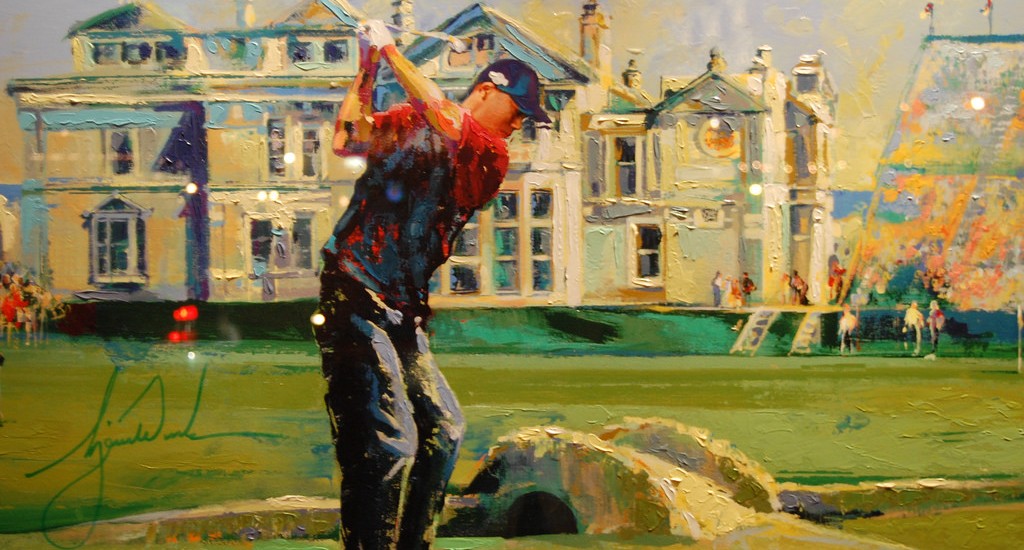


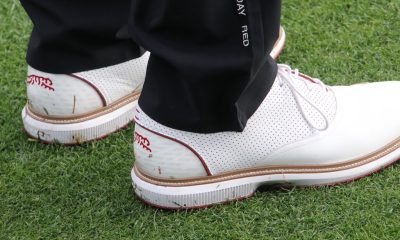

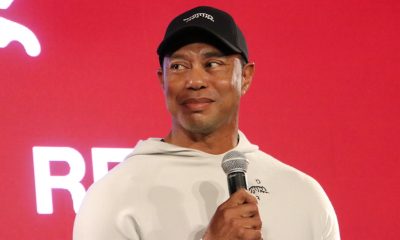

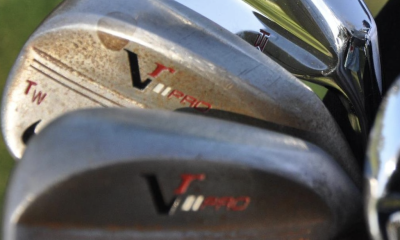




















The dude
Jun 3, 2017 at 9:46 pm
SHANK!!!!!…….sorry Bill for putting your name in the same sentence with TW….maybe that should have been the title….wow….fail…
Mat
Jun 3, 2017 at 6:57 pm
I agree the parallels are there, but for one difference. “Hello, World.” I love watching him as an athlete, but as someone who worked as a ballboy in the NBA, I saw early on that the things that make athletes great is exactly what makes them make bad decisions. It’s a straight line. Tiger asked for the media scrutiny because he knew, and Nike knew, that’s how dollars entered the PGA.
Bill Russell dealt with institutional racism when Tiger had people saying “it’s about time”. I think the point of isolation is fair, but it isn’t at all what Bill Russell faced in the 1960’s. Sure, they each reserved themselves, but I don’t think it’s fair to Bill Russell. His problems were from others, where Tiger’s problems originate from the tendencies and teachings of his dad, his own behaviour and addiction, and were multiplied by the fame that multiplied his paychecks. These things are not the same, and to conflate them unfairly minimises what Russell went through.
dcorun
Jun 3, 2017 at 6:35 pm
He has been the center of attention right or wrong since we was a child on The Mike Douglas Show. IMHO he lost his moral compass when his dad passed away. His dad taught him how to be successful but, wasn’t around to teach him how to handle post success which everyone whether athlete or not has to accept someday.
Frankie
Jun 3, 2017 at 2:45 pm
In terms of competing, it’s more like Bill Russell and Jack Nicklaus (both won the most NBA Finals and majors, respectively), while Tiger is similar to Michael Jordan (both were the most dominant in their prime).
johnnie d
Jun 2, 2017 at 11:22 pm
I’m getting real tired of writers speculating on what people think just so they can justify a paycheck. This is pure conjecture without any evidence that Bill and Tiger think this way. All the supporting data is second-hand. If the author had done his homework by interviewing Bill and Tiger and thus came to his conclusions, then I’d think differently, but there was no original research. I hope the GolfWRX editors are listening as this was totally BS.
Jasian Day
Jun 3, 2017 at 10:07 am
Getting real tired of writers speculating….
Hope ya got a time machine then
AlbieT
Jun 2, 2017 at 9:41 pm
People love Woods for his golf and then somehow thought he is this or that kind of person. When news came out that contradicted that “thought” they go crazy. Ridiculous! Tiger gave us his golf excitement and that to me was enough. It was a gift to watch him at his peak, period. He does not have to apologize to me ever.
Hawkeye77
Jun 2, 2017 at 9:21 pm
Tiger hasn’t walked 6 inches in Bill Russell’s shoes. Their careers certainly are not comparable (Russell = personal team focus and team sport, Tiger not at all – not enough room to get into all that’s wrong with comparing their careers), their life experiences not even close to comparable and nothing about the end (if Tiger is done) is comparable. Oh, they are athletes of color who are hard to get to know, right. Russell is a man and all that implies and deep, thoughtful, reflective, highly intelligent, engaging at times, but “isolation” used superficially makes for a very superficial article and a comparison just to publish something.
Bert
Jun 2, 2017 at 7:28 pm
+1
Golfgirlrobin
Jun 2, 2017 at 7:19 pm
I first met Bill Russell in 1984 when he used to show up at all the basketball games of the small San Francisco Bay Area college I attended. He was friendly and outgoing, used to shoot baskets after the games, hang out with students and was just generally awesome. Due to work stuff, I continued to see him well into the late 90’s. Maybe he hated the media, and who could blame him, but the idea that he was some unapproachable, introverted hermit just isn’t true.
Ben Jones
Jun 2, 2017 at 3:01 pm
Bottom line, he doesn’t have the swing and game anymore. It all boils down to thinking you have a great swing and game and growing confidence that you can make it happen. Too bad he doesn’t swing like the picture at the end. Tiger had a great golf swing. He fed off that perfection under Butch and even though he changed it, he had enough carry over and short game to do well. But he had to keep changing until it got really bad. If your swing is good, you will play good. Success builds confidence, we all know that. Tiger has neither a good swing or confidence. He is beat down. His body is beat down. We will never see him play like he once did.
Tim
Jun 2, 2017 at 2:31 pm
So no one wants to tackle why he is always referred to as being a “black” athlete? His mother was Thai. His dad had black, white, and Native American heritage. Why isn’t he referred to as an Asian or Thai athlete?
Jasian Day
Jun 2, 2017 at 5:21 pm
Math scores
Mike C
Jun 2, 2017 at 11:31 am
Great article. Both Tiger and Russell are viewed by many as Jerks (and maybe they are). But, as you point out, it ain’t easy being them.
Adam Crawford
Jun 2, 2017 at 12:20 pm
Thanks, I agree. And again, I don’t think any of that is an excuse for actions taken. But I think it’s important to try and understand “why” as opposed to just passing judgment. Of course, it’s virtually all speculation, and correlation doesn’t equal causation, but looking at what happened and trying to gain an understanding has some value.
H
Jun 2, 2017 at 11:17 am
Eldrick is not black. He is more Thai-Chinese than he is black. IF Eldrick has emphasized that aspect, and leaned more on his mother’s culture than his father’s side, none of this would have happened. But then he may never have been the golfer that he came to be. But that may have been a good thing, to be a more well-rounded person, than a skirt-chasing monster he came to be, a behavior he learned from his horrible father.
God Shamgod
Jun 2, 2017 at 11:50 am
Wait, are you suggesting that Tiger’s infidelity is due to his father being black? That is sad and pathetic.
Joe Golfer
Jun 2, 2017 at 3:18 pm
I’m not sure if he is suggesting that or not. If he is, then it is indeed shameful of him.
There was a very long Sports Illustrated article a while back. I don’t recall the issue, but it had Tiger on the cover with the headline “What Happened” and the author was named Alan Shipnuck, should you wish to try to google it. Within the article, it did indicate that Tiger’s father was unfaithful to his own wife and was a “skirtchaser”, so to speak. So perhaps that person (H) who wrote that was referring only to Tiger’s father specifically and not an entire race. That said, the way he phrased things does sound bad.
Jasian Day
Jun 2, 2017 at 11:14 am
Compare Tiger to Princess Diana….
Her car troubles were well documented too
larrybud
Jun 2, 2017 at 10:04 am
Sorry, but Tiger in 2017 is nowhere near the same, not even close, not in the same UNIVERSE as Russell in the 60s turmoil of race riots, and does a disservice to what Russell went through and the time that he played.
Tiger screwed up, a few times. Why is that so hard for people to say or acknowledge? The Tiger apologists will blame it on things like race, the media, his caddy, and the Tiger haters will just pile on and not recognize the guy is human, first and foremost, and makes mistakes just like everybody else.
Sure, it’s hard the average guy to be sympathetic with a superstar multi-millionaire, which to us appear to have everything in the world at their fingertips, but that doesn’t make them supermen who make perfect decisions all the time. In the end, we all end up 6 feet under.
I hope Tiger can turn things around, at least personally. If he every plays golf again at a decent level, that will just be icing on the cake for those of us who lived through his 10 years of golf greatness.
ooffa
Jun 2, 2017 at 9:05 am
This has got to be the dumbest article Golfwrx has ever posted. Complete foolishness. Tiger is a mess. that’s it! That’s all! It has nothing to do with anything else.
Are you bored Crawford? This is really lazy work on your part. You are better and smarter than this drivel.
Grizz01
Jun 2, 2017 at 2:58 pm
I commented on why Tiger is a mess. And my comment was removed. You cannot be honest about it. No one once it out in the open. I thought GolfWRX was going to get away from the politcally correct. Apparently they’ve gotten to big already and have to please the advertising dollars and censor stuff now.
Frank McChrystal
Jun 2, 2017 at 9:04 am
Michael Jackson.
K
Jun 2, 2017 at 12:57 pm
Thumbs up
Joseph
Jun 2, 2017 at 8:59 am
Very little in common in my view. Russell came into the league and was quickly followed by a succession of other black superstars, including Wilt, the Big O and others within a couple of years. He played a team sport and was the ultimate team player as the Celtics record proves. I was luckily able to see him play often as a kid at the Cincinnati Gardens for $3. Russell appeared thoughtful and reserved, but Tiger was aloof and imperious. Part of that may be golf, but from what one reads, that was Tiger’s personality and it appears that he has no friends. That has little to do with his race, there are a lot of people of all races who share that trait.
K
Jun 2, 2017 at 12:59 pm
Exactly. Team sport vs. loner sport. Not even in the same league. What Eldrick has done to himself after he got caught cheating with all them women, isolating himself because of his actions is not even close to Russel’s experience. What the heck is this article about, anyway?
Jack Nash
Jun 2, 2017 at 8:06 am
I see little comparison between Russel and Woods. Russel is a humble superstar, while Woods is just the opposite. Russel defined his position in his sport while Woods defined his at the same time as a technological boom hit the golf world.
birdie
Jun 2, 2017 at 9:10 am
tiger was always one of the last to adopt new technology. not sure what that has to do with anything.
Adam Crawford
Jun 2, 2017 at 10:20 am
The humbleness is simply one aspect of their personality. I think that just because there is one attribute that doesn’t seam to match up doesn’t mean their paths are dissimilar. When looking at the arc of their career and the impact they had on their respective sports, the arcs are strikingly similar.
AceW7Iron
Jun 2, 2017 at 7:54 am
Why must it always boil down to skin color in America? Its never because they Guy or Gail is just a human being with faults and temptations that are as old mankind itself…No…in America it always stops at the epidermis which in reality is the most outward layer of a human being.
I submit to you that TW’s problem is NOT with his skin covering but rather lies deeper within…much closer to his heart. The Man had it all & still has considerably more than most in the WORLD. Tiger should be in his prime and encouraging generations of fans to do well in life but it appears he is too busy popping fuzzies…a choice only he could make. Its foolish to blame his woes on others…There is only one Man living in his skin that makes the call…HIM
Jim
Jun 2, 2017 at 9:31 am
99% thought Tiger’s mixed ethnicity and skin color were as iimportant as his talent. If a white country club kid won 3 US Ams he woulda got great 7 figure offers, but certainly not the 8 figure deal and recruitment to be the global face of a brand – essentially replacing Michael Jordan…
A few shitbirds aside, Tiger had ZERO racism to deal with compared to Russell
Adam Crawford
Jun 2, 2017 at 10:23 am
I apologize if you thought the entire premise was trying to prove that skin color was an excuse for his actions recently, it wasn’t. But I think there is a wide misunderstanding, or lack of attention, to the amount of pressure felt by someone like Tiger Woods. I also think, that some of his actions may have been curtailed had he been surrounded by dear friends like so many of us have, the friends that keep us in check. With the level of fame achieved and the amount of pressure on an athlete of his caliber (Russell the same), it’s understandable for someone to retreat within themselves, and when that happens, there is no outside “voice of reason” telling us when something may be a bad decision. I know I’ve had many a friend talk me out of what I thought was a good decision at the time, but in retrospect would have been a disaster. If someone is isolated, then they may not have that type of friend to curtail poor choices.
ooffa
Jun 2, 2017 at 10:45 am
Ya, Sure, Whateva,
K
Jun 2, 2017 at 1:02 pm
“I know I’ve had many a friend talk me out of what I thought was a good decision at the time”
Now that’s hilarious, in regards to how you got to publish this worthless article.
Adam A
Jun 2, 2017 at 1:18 pm
What does skin color have to do with both men living in isolation? As true as it is that both men were trail blazers in their particular sport when it came to dominance in a game filled with mostly white men. Their isolation seems more about personality than race.